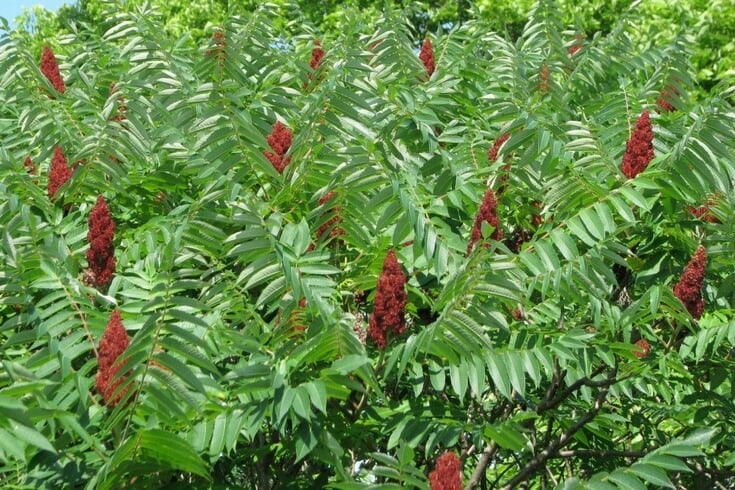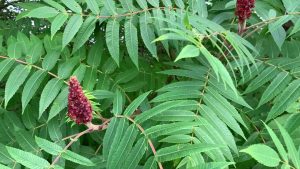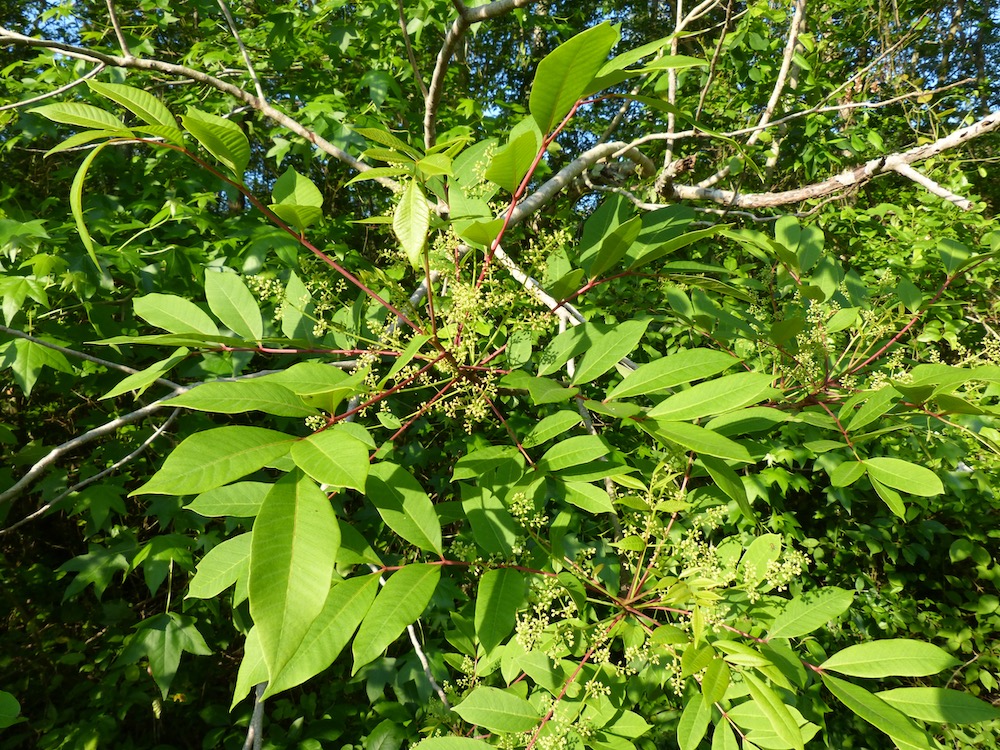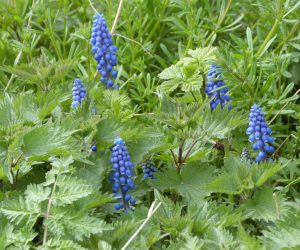
Here at Foxy Gardens, a landscaping and groundskeeping business based out of Cambridge, Ontario, we are well are of a plant called Sumac.
Sumac, also called Poison Sumac (depending on the type), is a diverse genus of flowering plants, holds a special place in the landscape of Ontario, Canada.
With its vibrant foliage and unique fruit clusters, sumac plays a vital ecological role while also carrying cultural significance.
However, not all sumac species are harmless; some can pose health risks due to their poisonous nature.
In this article, we will explore the different types of sumac found in Ontario, distinguish between the harmless and toxic varieties, delve into identification methods, and discover alternative applications of this plant beyond its potentially hazardous aspects.

Sumac Species in Ontario
Ontario is home to several sumac species, each with its distinct characteristics and roles within the ecosystem.
Two commonly encountered sumac species in the region are Staghorn Sumac (Rhus typhina) and Smooth Sumac (Rhus glabra).
These species are easily recognizable due to their upright growth habit, compound leaves, and cone-shaped fruit clusters.
Identifying Harmless Sumac Varieties
Staghorn Sumac (Rhus typhina)
Named for its distinctive fuzzy branches that resemble deer antlers, Staghorn Sumac is a non-poisonous plant found throughout Ontario.
It bears cone-like clusters of red, hairy fruits, which persist through the fall, adding a vibrant touch to the landscape.
The leaves of this species are serrated and arranged in a feather-like pattern.

Smooth Sumac (Rhus glabra)
Unlike Staghorn Sumac, Smooth Sumac has smoother branches and its fruit clusters are less dense.
The leaves are also serrated and arranged in a compound pattern, creating a feathery appearance.
The berries of Smooth Sumac are known for their tart flavour and are often used to make beverages and culinary treats.
Identifying Poisonous Sumac Varieties
One species of sumac that can be found in Ontario, Poison Sumac (Toxicodendron vernix), should be avoided due to its toxic nature.
This plant is notorious for causing severe skin irritation upon contact, similar to the effects of poison ivy.
Differentiating Poison Sumac from Harmless Sumac
Leaves: Poison Sumac has pinnate leaves with an odd number of leaflets (usually 7–13) arranged in pairs along a central stem. The leaves have a shiny appearance and are a pale green color.
Berries: Unlike the red, fuzzy berries of harmless sumac species, the berries of Poison Sumac are white or grayish, hanging in loose clusters.
Habitat: Poison Sumac tends to thrive in wetlands and swampy areas, often growing in standing water or near the edges of ponds.
Alternative Applications of Sumac
Beyond its potential hazards, sumac offers various practical and culinary applications:
Culinary Uses: Edible Sumac varieties, such as Staghorn and Smooth Sumac, have berries with a tangy flavor.
They can be used to make a refreshing, lemony-flavoured tea called “sumac-ade” or added to dishes as a spice. The berries are rich in antioxidants and vitamin C.
Dyeing: Sumac berries have been traditionally used to produce natural dyes. They yield shades ranging from pink to deep purple, depending on the mordants and techniques used.
Medicinal Uses: In some traditional practices, sumac has been used for its potential medicinal properties. It has been thought to possess anti-inflammatory and antiseptic qualities.
Landscaping: Harmless sumac species, particularly Staghorn Sumac, are often used in landscaping due to their striking appearance and ability to attract birds and wildlife.
Conclusion
Sumac, with its diverse species, presents a unique botanical tapestry in Ontario.
While harmless sumac species like Staghorn and Smooth Sumac contribute to the natural beauty and culinary delights of the region, Poison Sumac serves as a reminder of the need for careful identification and respect for the natural world.
Whether it’s crafting a soothing cup of sumac tea, adding a splash of color to fabrics, or appreciating its ecological role, sumac’s presence in Ontario remains an integral part of the province’s ecosystem and cultural heritage.






